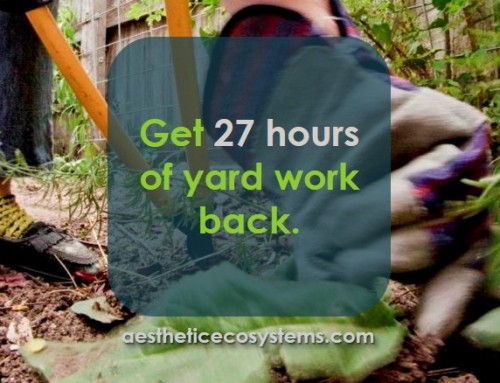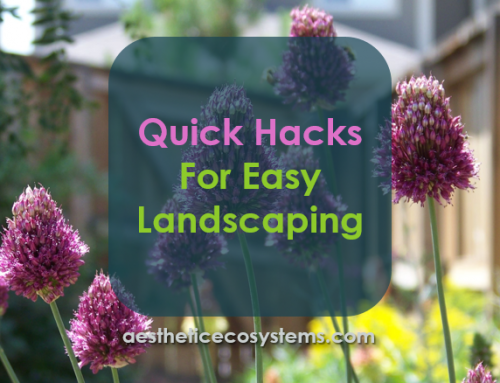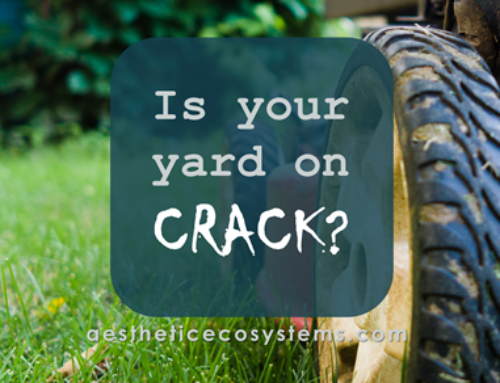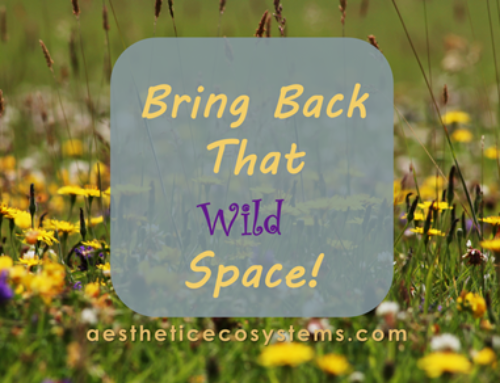What if you had a garden that only needed maintenance twice a year? And it actually looked good?
Whoa… does that really exist? Of course! I wouldn’t make up something like that!
Okay this is actually something you can do
and it is easy if you do it right
and it can look really good
and it does only need 2/365-ths of a year of maintenance.
Here’s how:
- Plant tightly
- Effective groundcovers
- Climatic tolerance
- Heavy mulch and compost
- Perennial planting
Start your 2x garden
Plant tightly
The key here is to design your garden to be a bit snug at maturity, but not crammed to the point your plants are struggling. In order to do so, research the mature size of your plant and how long it takes to reach maturity. For example, a tree may take 30+ years to reach mature size, while an Echinacea coneflower takes about 60 days.
By planting tightly you add more competition to your garden, which also competes out your unwanted plants.
Effective groundcovers
Groundcover plants are just that. They cover ground. Our most popular ones consist of a few species of grass more commonly known as our lawns. There are many groundcovers that exist for both sun and shade, wet to dry conditions.
The key here is to select the right one for the condition of your garden, with the right level of ‘aggressiveness.’ In other words, some groundcovers can end up taking over a location completely, whereas others may not cover an area tightly enough and become weedy.
For establishment, you may need to plan for succession of the groundcover as it takes over a space. Early on, you may need to mulch heavier in the gaps.
Climatic tolerance
This often overlooked aspect of a landscape refers to the climatic conditions of the local site. What are the general conditions of temperature and moisture that the plant may experience? What are the extremes?
How much light will it receive when planted? Over time, will this change?
The more conditions a plant can weather, especially moisture and temperature, the more eligible it becomes as a member of your twice a year garden.
Heavy mulch and compost
Especially during establishment, it is important to effectively use both mulch and compost.
Here, the compost serves as a soil health booster and the mulch serves as an early groundcover/weed preventer.
If your garden bed has poor soil, a healthy layer of compost mixed 50/50 with topsoil will make a huge difference in the success of your garden in the short and long term. Compost provides both nutrients and organisms to your garden – both necessary for plant health.
Mulch provides both a weed barrier and a nutrient source for your soil organisms as it decomposes. The weed barrier is important, especially during establishment before any ground cover can effectively manage as a weed barrier.
Perennial planting
The idea here is to avoid having to plant something new. every. year.
While perennials obviously fit the bill, you can also consider self-sowing annuals. These are plants that do not have root systems that survive a full year, but may drop seeds and re-establish in the same area from seed the following year. One such example is pot marigold or calendula (Calendula officinalis). This is a beautiful plant that re-seeds itself once well established for a full season.
One potential drawback here is during establishment. If you have a heavy mulch layer during the early phases of the garden, you also will prevent the wanted plant seeds from re-sowing themselves. Thus, the use of self-sowing annuals is better for use in your mature garden.
Annual maintenance
So you planted your garden with all of these wonderful low maintenance plants. Now what? I only need to do more than look at it twice a year, right?
That’s right.
Let’s look at this over the course of a year.
Spring
This is the time when your garden wakes up! Here’s what you need to do:
- Spread compost – If organic matter or soil life seems lacking. Loose, moist soil is ideal.
- Mulch – If soil coverage and weed prevention seems lacking. Four inches of depth is ideal.
- Trim – If plants have remaining dead material, or if plants need pruned. It is best to prune before growth begins.
- Plant – If you need to replace or add new plants to the garden. Fall is generally the best time for this. Early spring before major growth is next best.
Summer
This is the time when your garden is going bonkers and (hopefully) looks amazing!
- Relax. You already have your first working day for the year completed.
Fall
This is the time when the garden is slowing down. Time for day two!
- Weed – most weeds are finished growing by now. Hopefully you didn’t have many. If you did, pull them and try to minimize seed drop. Figure out why the weeds grew. Consider whether you had enough compost and enough mulch. Weeds like low nutrient situations and available soil space to grow.
- Spread Compost – Again, if organic matter seems lacking… you know what to do.
- Mulch – If soil is exposed, covering it over the winter helps protect plant roots and soil biology.
- Plant – This is the best time of year to establish perennials. Once planted, their roots often continue to develop over the winter when the ground is not frozen.
Winter
What? I already spent two days on my garden! I don’t have to do anything else, right?
- Enjoy the winter textures. Remaining plant growth can provide exciting textures in the landscape, as well as providing important over-wintering habitat for helpful insects in your garden to prevent pests.
Congratulations! You just did the lazy smart way to plant and maintain a low-maintenance garden! Enjoy!
Let me know how it works for you! What are your successes? What are your challenges?
…Okay Ben, I get how to do it, but what to plant? You didn’t really cover that!
There is great variance on what plants work best in a specific region. I have compiled a short list of plants that work well in most regions. Check out this free giveaway if you want some suggestions!
Want to learn even more? Download the FREE Suggested Low Maintenance Plants List
Photo Credits: Flickr ukgardenphotos













Leave A Comment